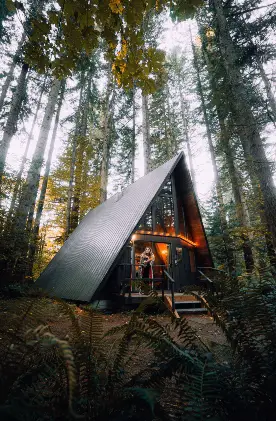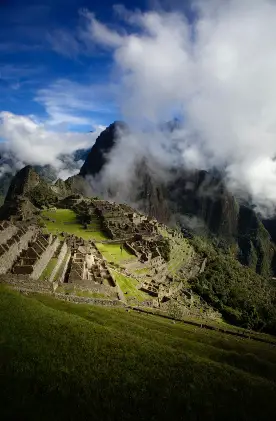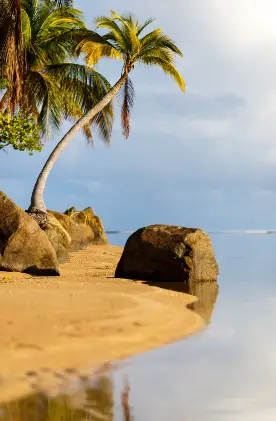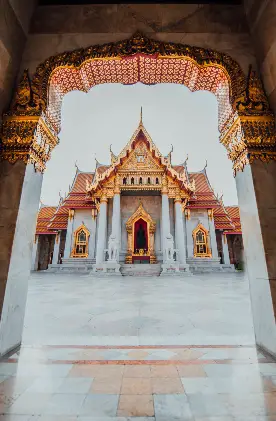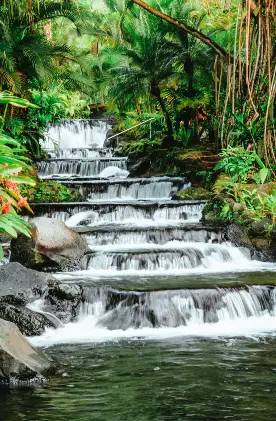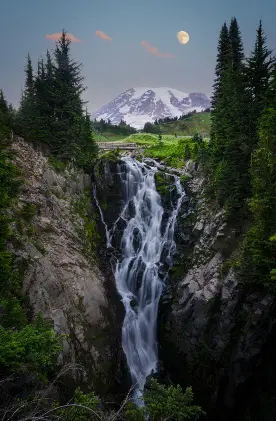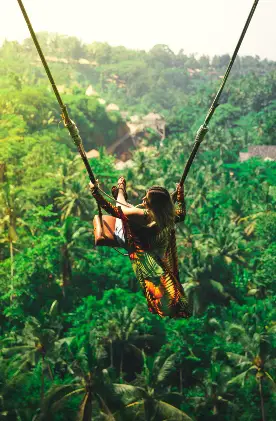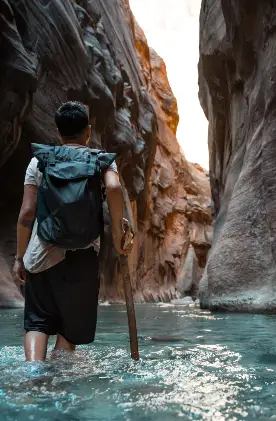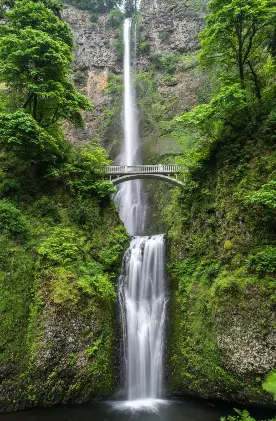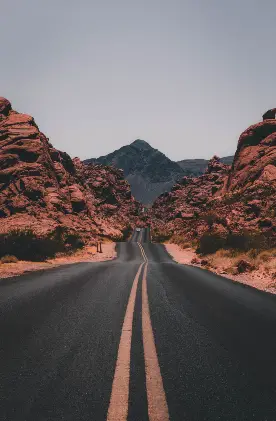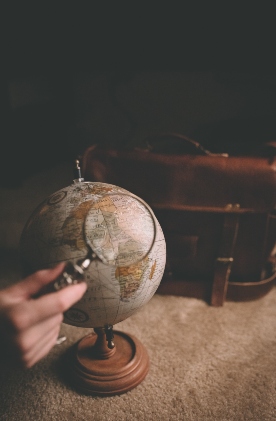I’m Shalee and welcome to my article on the Mount Rainier summit climb. I grew up in a tiny rural farm town in mid-Michigan. This tiny town definitely wasn’t the most inspiring place when it comes to travel and hiking.
There isn’t a mountain within a few hundred miles! But I was fortunate to be raised by parents that took my brother and I on hiking and camping trips all over Michigan. They were the ones who instilled in my bones that adventure is everywhere, you just have to get up and look around.
When I graduated high school I was determined to get out of my town. I started community college and got a job scooping ice cream that summer after my first year. I earned $6 per hour but lived with my grandparents and used every cent to travel around the Great Lakes and sleep in my car.
I eventually started learning about ‘travel hacking’ and used that to book my first real trips. Where I’m from no one travels much except once a year trips to Florida for a few lucky families. So when I started traveling people started messaging me on Facebook asking questions. Then on one dreary winter’s day in February I started Shalee Wanders to start sharing tips and tricks for traveling on a budget (website here: shaleewanders.com).
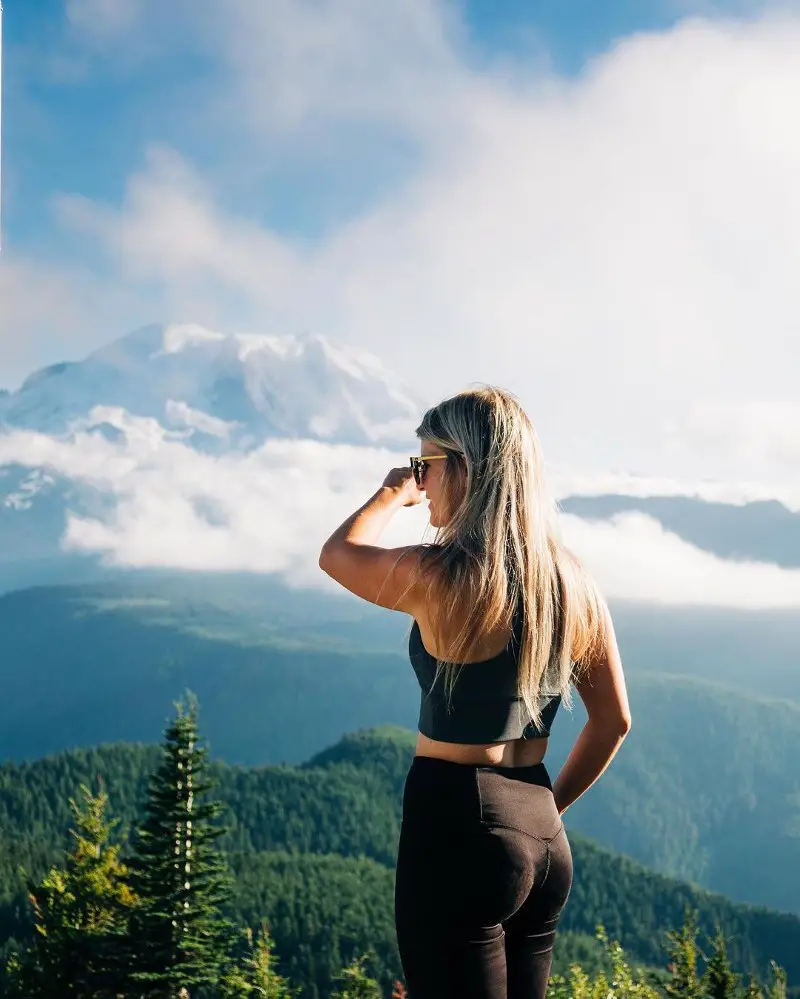
Mount Rainier Summit Climb in July, 2021
My husband and I started picking away at state highpoints a few years ago. There is this thing called the “Highpointers Club” which is when you stand on the tallest point of every state. It’s a pretty cool concept! We are doing it a little bit differently by doing every state highpoint over 6000ft. We are avid hikers and climbers and being in the mountains is our comfort zone.
We actually got engaged on the summit of Mount Whitney – the tallest point in the continental 48. Mount Rainier was something we had discussed for years and when camping permits went up for grabs in March, 2021 we snagged a couple to give it a go. We summited Mount Rainier on July 9, 2021. July is the peak climbing season for Rainier, but it was a low snow year and a massive heatwave hit the region a week before our climb.
The conditions mirrored August more than early July. Most people climb Mount Rainier between May and July because of the prime conditions and reduced risks on the glaciers. It’s a short season but come August and September many additional crevasses and icefall hazards come into play as warm temperatures impact the glaciers through the summer.
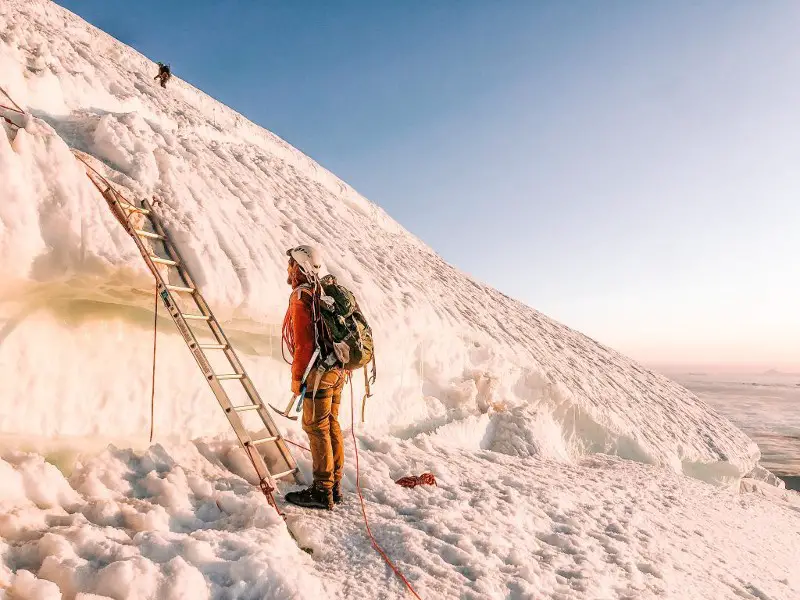
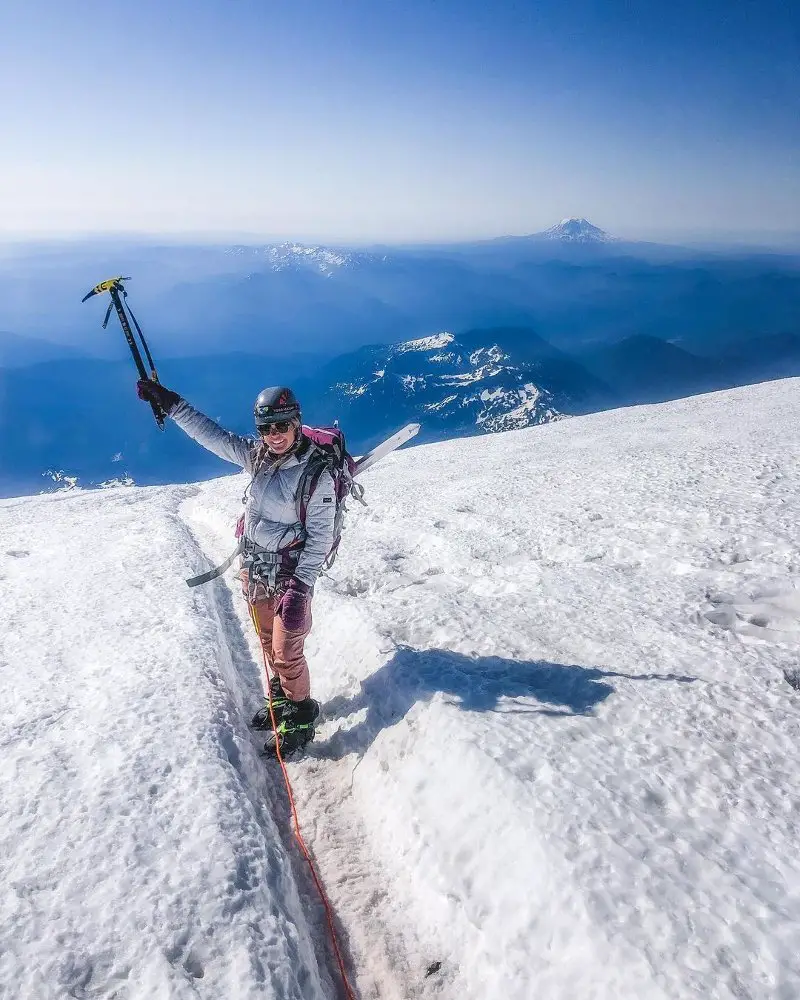
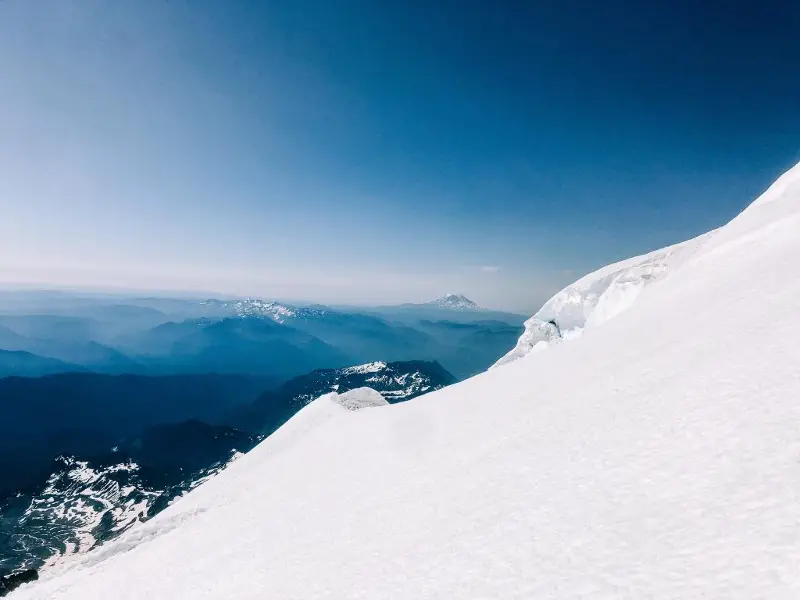
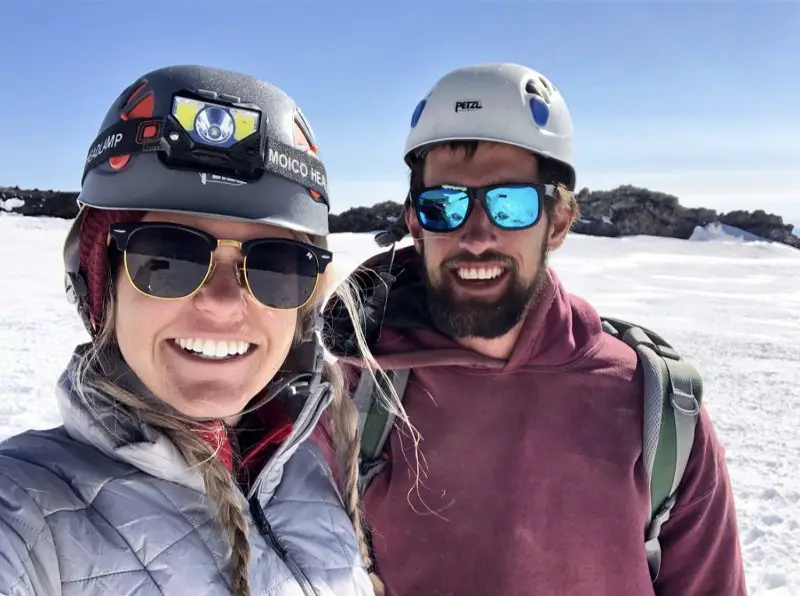
Disappointment Cleaver Route, “DC Route”
The most popular Mount Rainier summit climb route is known as the Disappointment Cleaver route, which is the easiest and safest way up the mountain. It begins in the Paradise area of Mount Rainier National Park.
At first, the trail follows the crowded day trekking path to Panorama Point before branching up across the Muir snowfield. Most climbers complete the climb in two or three days. It’s not recommended to attempt it in a single summit push, even for experienced climbers and mountaineers.
We completed the climb in two days, leaving at 11:00 am on the first day from the Paradise parking lot and making it to basecamp at Camp Muir at about 3:00 pm. It’s important to get to basecamp early in the day to ensure you have enough time to carve out ice from the glacier and boil it down.
All your water for the climb needs to be harvested from the glacier. Depending on your party size and equipment, that could take over an hour. Once you have refilled your water most climbers attempt to go to bed by 8:00 pm as alarms start going off to begin the climb at around 11:30 pm.
Most guided tours leave basecamp around midnight. We began our ascent around 12:30 am. When climbing Rainier you must do what is known as an alpine ascent, which means leaving in the early hours of the morning to avoid increased risk that comes with afternoons. The later in the day you go the bigger the risk of afternoon storms, icefall and unstable glaciers.
We pushed slowly but steadily from 12:30 am to make it to the summit at around 7:30 am. Because we started out later than nearly all other climbers that day, we were some of the last people on the summit when we began our descent at around 8:10 am. The sun was already quite hot and it was affecting snow conditions as we descended down the glaciers.
Besides a short stop back at Camp Muir to pack up, it was a long descent back to the car as we arrived at 5:00 pm. In total, that made for a 28 hour trip and a 16 hour summit day. I couldn’t wait for celebratory pizza after!
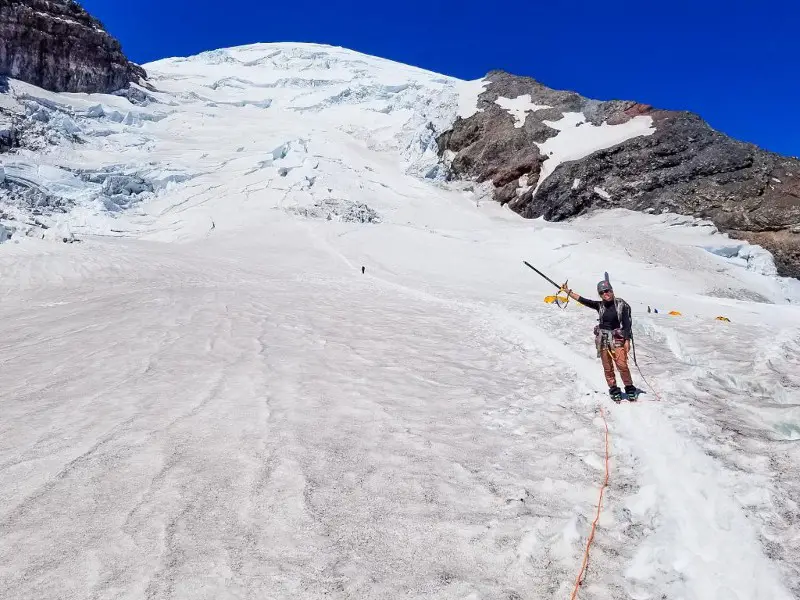
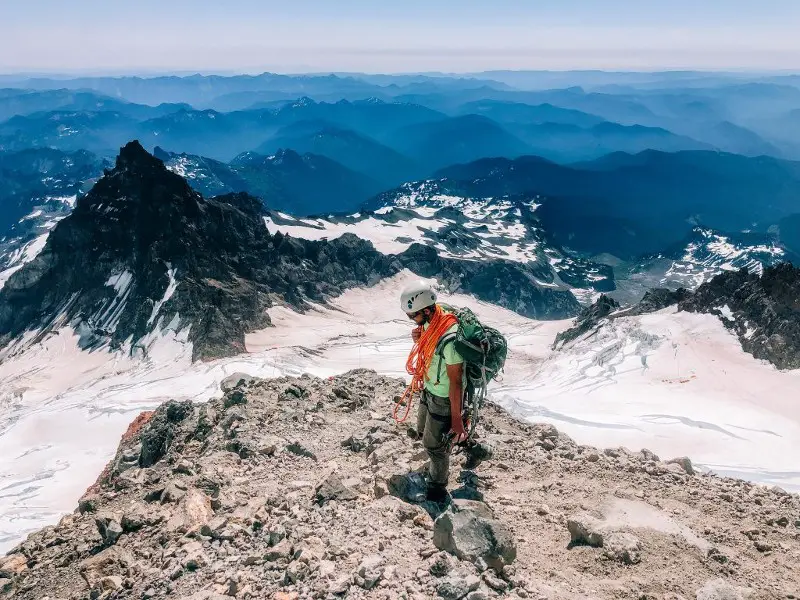
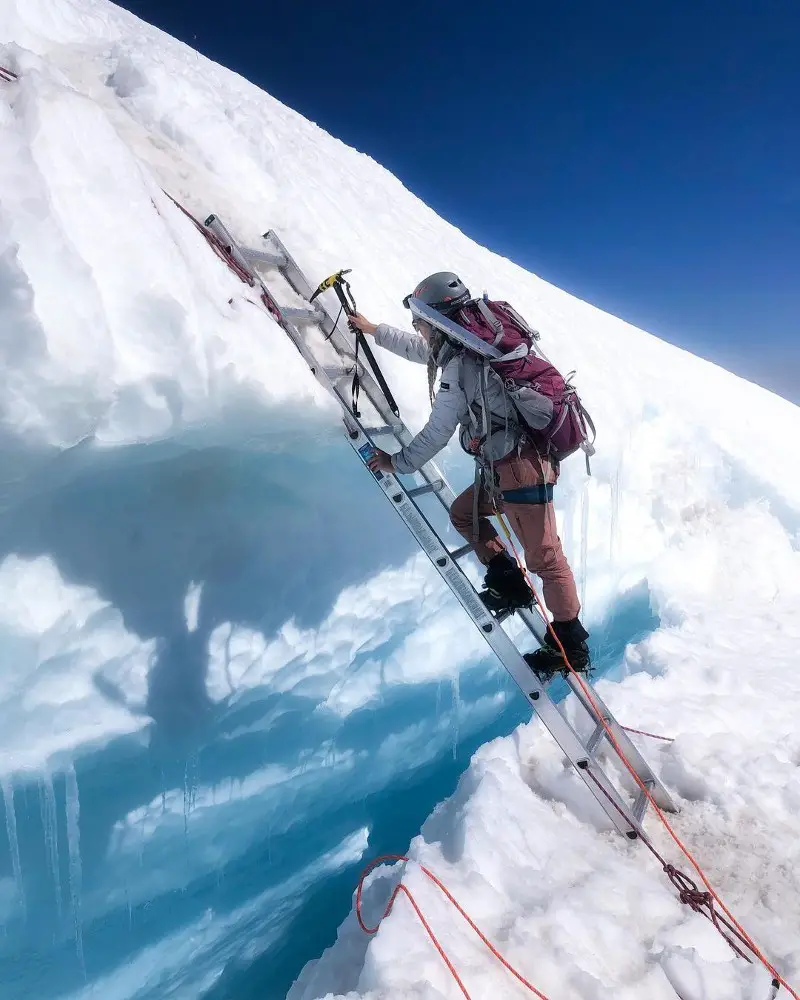
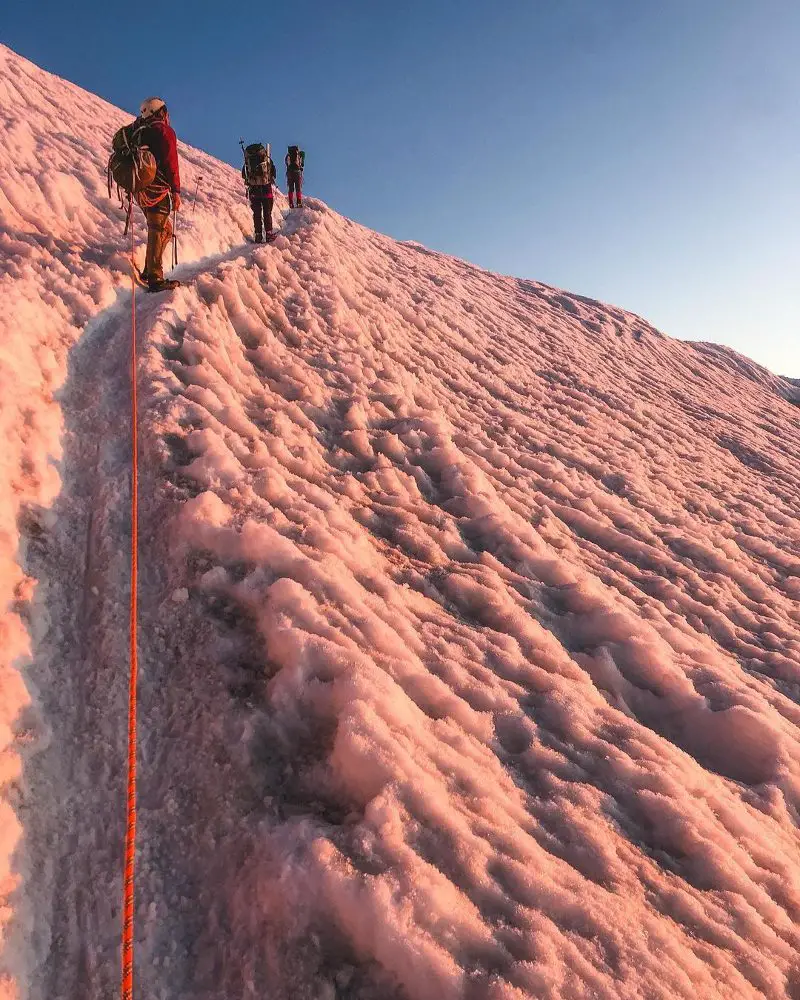
Sunrise on the Top of Mount Rainier
The funny part about the Rainier climb is that you don’t see anything on the way up! Since you leave just before midnight, a majority of the ascent is in the darkness. We watched the sunrise roughly 600 feet below the summit which was incredible. Right before dawn, the wind was whipping us at torturous speeds and we were exhausted and miserable after over six hours of straight climbing. But then the sun rose and the world stood still.
This was absolutely one of the best moments of my life! Going down was a whole other world! It was incredible how much was hidden in the darkness on the way up. I can’t even begin to describe what it’s like to walk amongst gigantic glacial seracs and crevasses and look down at the world below.
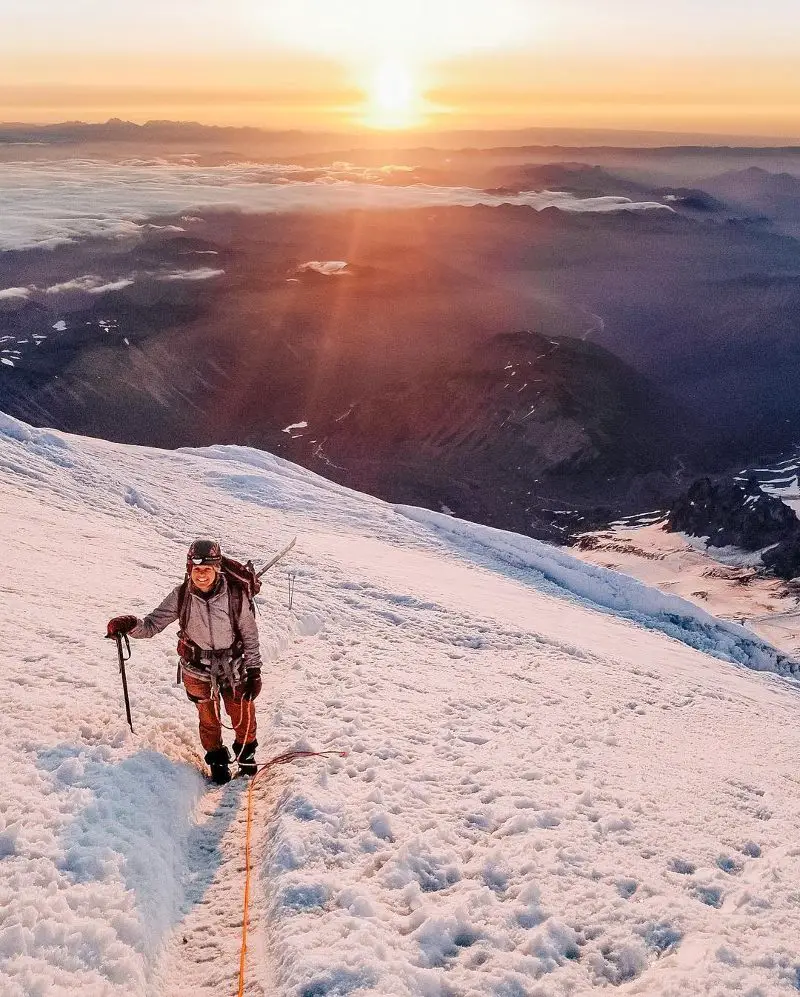
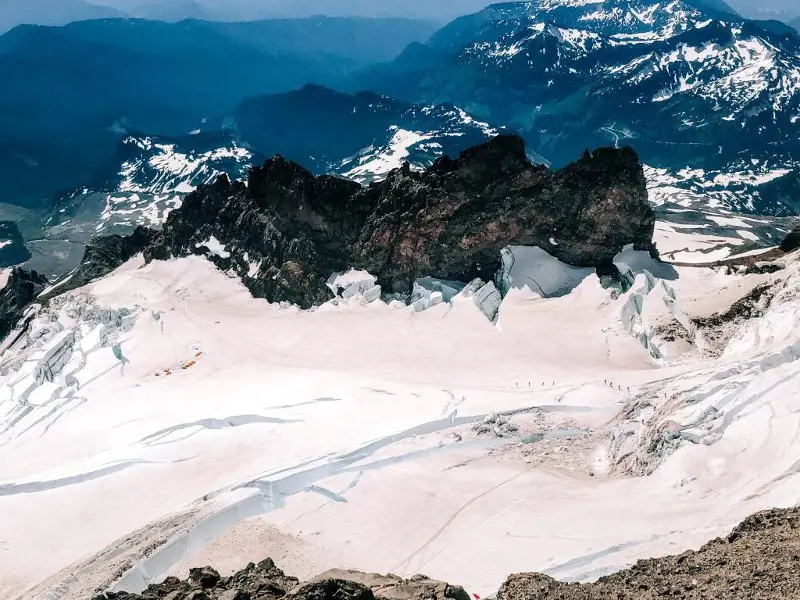
How Hard is the Mount Rainier Summit Climb?
It’s important to note that this is not a climb for a casual hiker or even someone who has casual mountain experience, e.g. someone who has climbed a few 14ers in Colorado. We are experienced in the mountains and even I was a bit nervous going into the Mount Rainier climb.
Rainier is an incredible climb, but you want to ensure you are comfortable with glacier travel and knowledge in things like crevasse rescues, mountaineering, etc. For those who like to hike but don’t feel comfortable going for the summit, many people opt for a day hike to Camp Muir. You get amazing views from Camp Muir alone and it’s definitely worth the trek!
In total, the Mount Rainier summit climb is 9,000ft of elevation gain and nearly 15 miles of difficult terrain to trek. Getting to the top alone is difficult, and when you are there you are only halfway. Even hikers with mountain experience sometimes feel more comfortable going with a guide. There are two main guiding services on the mountain: RMI and Alpine Ascents.
If you are interested in climbing Mount Rainier but would like more mountaineering/technical training and would be more comfortable with a guide, I highly recommend paying the extra for a guided trip.
Camp Muir as your Basecamp for the Summit
Camp Muir, located on the Cowlitz Glacier about halfway up, is the most used basecamp for the summit. There are a few ranger stations and other structures (including pit toilets) at the camp, but no running water or other facilities. If you plan to camp here you will need to bring all necessary gear as you will need to carve out a spot in the glacier for your tent. It’s essential to have thermal gear as you will be sleeping directly on the glacier.
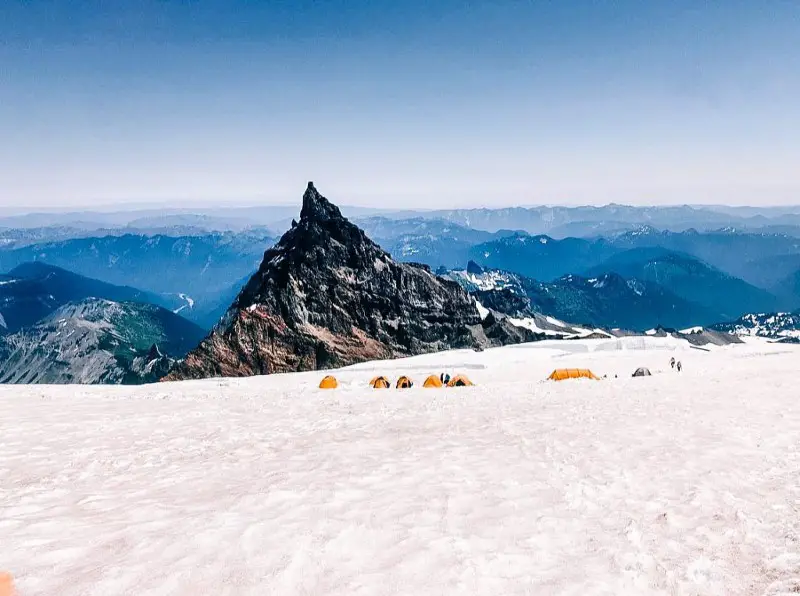
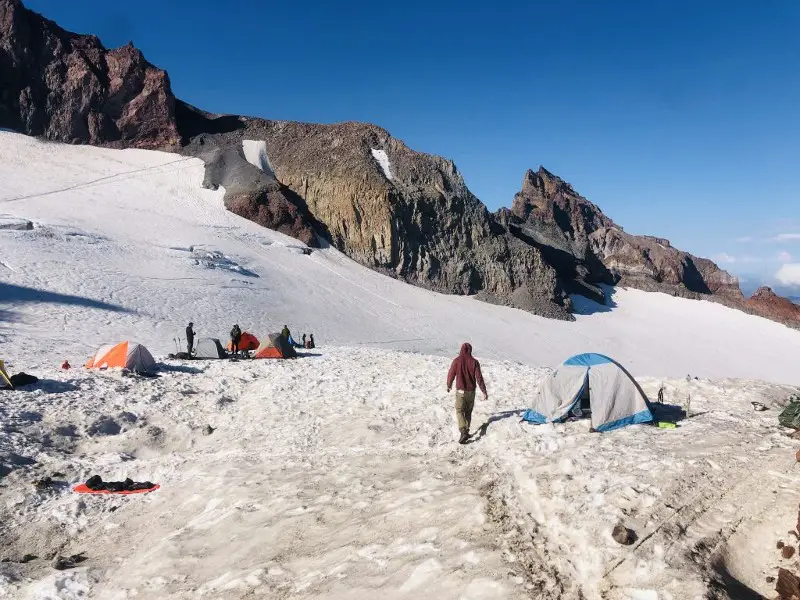
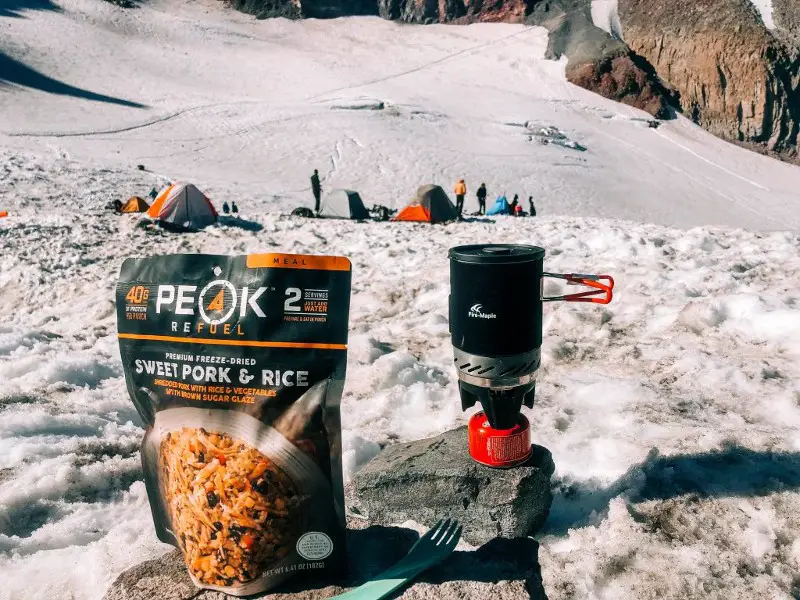
Tips for the Mount Rainier Summit Climb
Train, train, train! Mount Rainier summit is a once-in-a-lifetime adventure but climbing underprepared can be fatal. I don’t want to make it sound scary, but it’s important to be properly trained before going for the summit.
Another important thing to know is that permits are required. Typically permits are available for the approaching climbing season in March, but there are some walkup permits available as well. When applying for permits they will also ask you to outline your mountaineering experience to help ensure you are properly prepared for the summit climb.
Once you have decided to go, get hyped! The climb will be tough and it will demand everything. I was cold, I cried, and I almost turned around. But man, the suffering was worth it for those 40 minutes we stood on the top!
Also, know that it’s okay to turn around. Not making the summit is just a part of mountaineering! Of those who set out for the summit, only about 50-60% make it to the top. Listen to your body and listen to the weather. As someone who is highly susceptible to AMS (acute mountain sickness), I can tell you there is nothing scarier than fighting altitude sickness high in the mountains. If at first you don’t succeed, you can always try again.
Best Moment of my Mount Rainier Summit Climb
My best moment has to be the sunrise moment I mentioned earlier. Shortly before that I felt awful. I couldn’t tell if it was exhaustion, AMS, lack of sleep or all of the above. We were crouched behind a rock at the top of the cleaver being pounded by wind and I could barely feel my fingers.
We decided to push a little further and if I didn’t feel better we would turn around. It was crushing to think we might not make it, but you cannot put your life and your partner’s life at risk in mountaineering situations like this.
I’m not exactly sure what happened but everything suddenly changed. The wind became a calm silence, the sun rose majestically and turned the sky every color that defines a perfect sunrise, and I felt as if I could conquer anything. Not only was the sunrise beautiful, but it was also the moment I knew we would summit one of the most beautiful mountains on earth.








